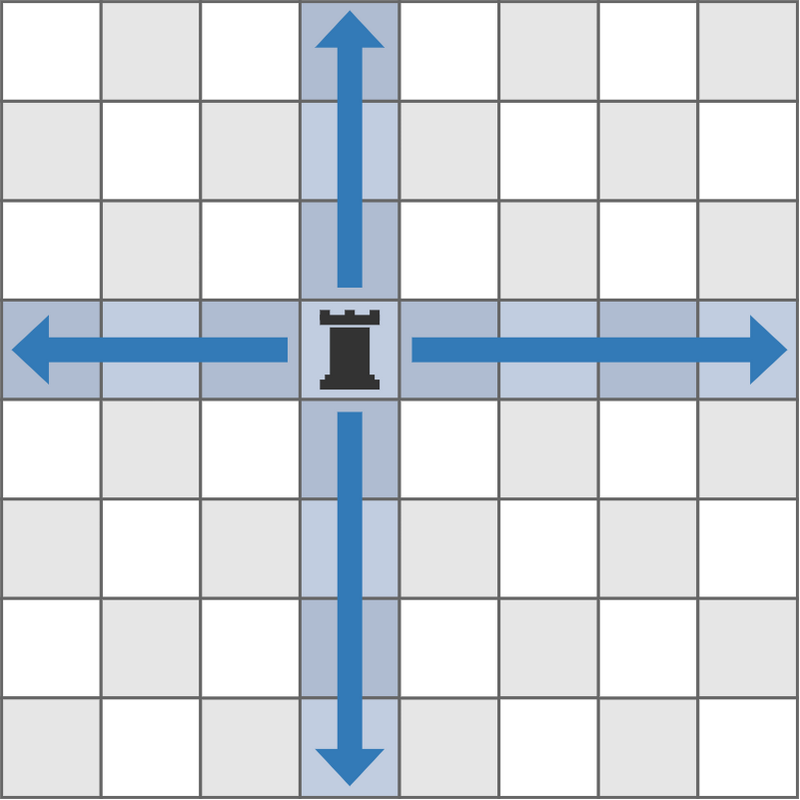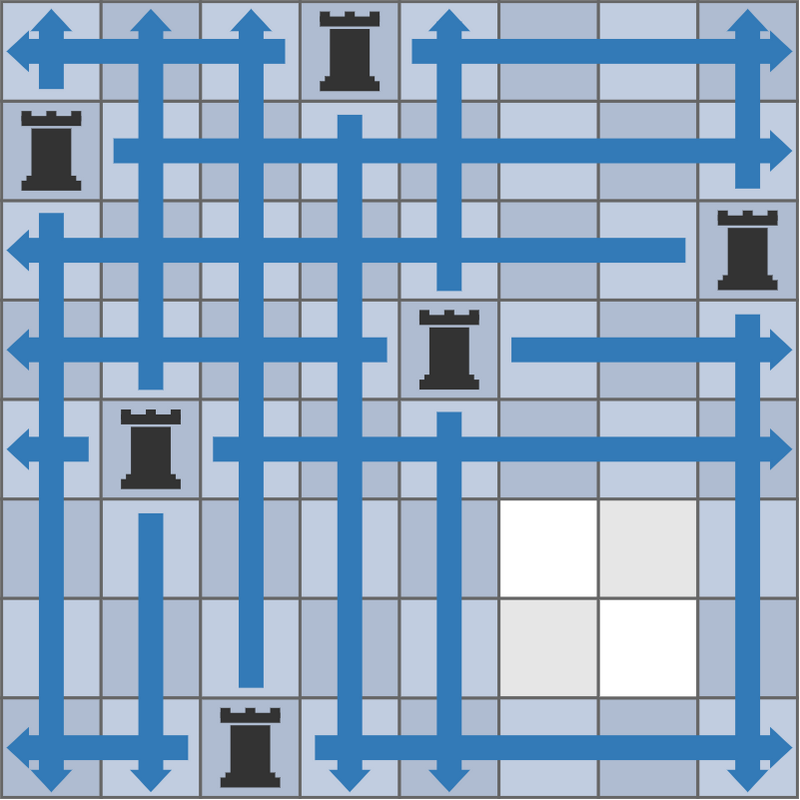【AtCoder】Beginner Contest 377-B.Avoid Rook Attack
Problem Statement
题目链接
There is a grid of 64 64 64 squares with 8 8 8 rows and 8 8 8 columns. Let ( i , j ) (i,j) (i,j) denote the square at the i i i-th row from the top ( 1 ≤ i ≤ 8 ) (1\leq i\leq8) (1≤i≤8) and j j j-th column from the left ( 1 ≤ j ≤ 8 ) (1\leq j\leq8) (1≤j≤8).
Each square is either empty or has a piece placed on it. The state of the squares is represented by a sequence ( S 1 , S 2 , S 3 , … , S 8 ) (S_1,S_2,S_3,\ldots,S_8) (S1,S2,S3,…,S8) of 8 8 8 strings of length 8 8 8. Square ( i , j ) (i,j) (i,j) ( 1 ≤ i ≤ 8 , 1 ≤ j ≤ 8 ) (1\leq i\leq8,1\leq j\leq8) (1≤i≤8,1≤j≤8) is empty if the j j j-th character of S i S_i Si is ., and has a piece if it is #.
You want to place your piece on an empty square in such a way that it cannot be captured by any of the existing pieces.
A piece placed on square ( i , j ) (i,j) (i,j) can capture pieces that satisfy either of the following conditions:
- Placed on a square in row i i i
- Placed on a square in column j j j
For example, a piece placed on square ( 4 , 4 ) (4,4) (4,4) can capture pieces placed on the squares shown in blue in the following figure:

How many squares can you place your piece on?
Constraints
- Each S i S_i Si is a string of length 8 8 8 consisting of
.and#( 1 ≤ i ≤ 8 ) (1\leq i\leq 8) (1≤i≤8).
Input
The input is given from Standard Input in the following format:
S 1 S_1 S1
S 2 S_2 S2
S 3 S_3 S3
S 4 S_4 S4
S 5 S_5 S5
S 6 S_6 S6
S 7 S_7 S7
S 8 S_8 S8
Output
Print the number of empty squares where you can place your piece without it being captured by any existing pieces.
Sample Input 1
...#....
#.......
.......#
....#...
.#......
........
........
..#.....
Sample Output 1
4
The existing pieces can capture pieces placed on the squares shown in blue in the following figure:

Therefore, you can place your piece without it being captured on 4 4 4 squares: square ( 6 , 6 ) (6,6) (6,6), square ( 6 , 7 ) (6,7) (6,7), square ( 7 , 6 ) (7,6) (7,6), and square ( 7 , 7 ) (7,7) (7,7).
Sample Input 2
........
........
........
........
........
........
........
........
Sample Output 2
64
There may be no pieces on the grid.
Sample Input 3
.#......
..#..#..
....#...
........
..#....#
........
...#....
....#...
Sample Output 3
4
解法
题目中说,假如当前位置有元素,那么当前位置的一行和一列上都不能放其他元素。让我们计算出还有多少个位置可以放元素。
那么,我们使用一个二维 bool 类型的数组存储是否可以放元素。
如果位置 map[i][j] 上有元素,那么就将 st[0][j] 和 st[i][0] 都标记为 true 表示有元素。
统计答案时,只需要有统计没有元素的位置就可以了,即 st[j][0] 和 !st[0][i] 都为 false 即可。
具体代码如下:

char map[10][10];
bool st[9][9];
void solved() {/* your code */for (int i = 1; i <=8; i ++) {for (int j = 1; j <= 8; j ++) {cin >> map[i][j];if (map[i][j] == '#') {// 在列上标记st[0][j] = 1;// 在行上标记st[i][0] = 1;}}}int sum = 0;for (int i = 1; i <= 8; i ++) {for (int j = 1; j <= 8; j ++) {// 寻找行和列都为 false 的情况if(!st[j][0] && !st[0][i]) sum ++;}}cout << sum << endl;
}
总结
这道题目因为数据规模很小,所以我们可以使用二维数组存标记去题,但是如果数据量规模较大,使用二维数组存起来的方法必然失效。对于数据量规模较大的题目,下次将会分享具体做法。
